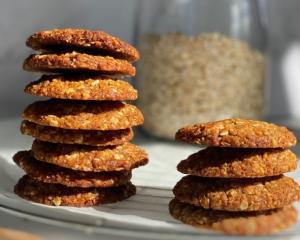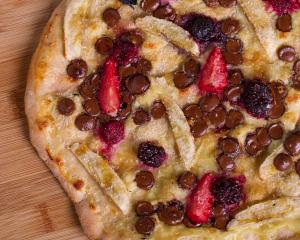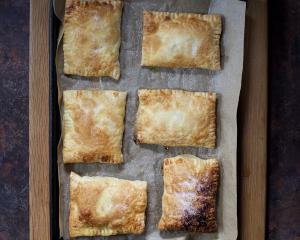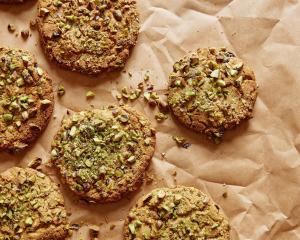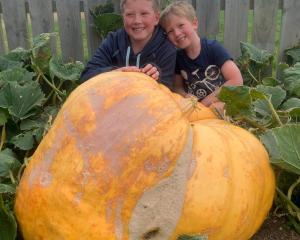They are everyday foods that happen to be superstars in their field she says.
They are affordable and readily available, although some of the fruits and vegetables are seasonal and the meat and fish are ethical and sustainable.
So what makes the list? Things like asparagus, beetroot, broccoli, Brussels sprouts, cabbage, cauliflower, kale, mushrooms, tomatoes, silverbeet, spinach and watercress among the vegetables, then there are fruits, nuts, grains and seeds, salmon, sardines, chickpeas, eggs, yoghurt, calves liver and kangaroo: perhaps here we could substitute venison.
However, her recipes aren't limited to these foods, but, as she says, they are a valuable addition to a healthy diet and regular exercise regime.
It's all very sensible and her recipes are fresh, simple and generally quick.
For those who like to plan ahead, she gives pantry lists, as well as weekly menus and shopping lists.
A useful cookbook for anyone, not just the health- and fitness-conscious.
The American doctor and health promoter recommends making vegetables, half raw and half cooked, the basis of your diet (about 30-60% of calories) with fruits, beans and legumes, and seeds, nuts and avocados the next most important (10-40%).
Further up the pyramid are whole grains and potatoes (20% or less), then the foods you should eat rarely, eggs, oil, fish and fat-free dairy.
At the top, the things you should eat hardly at all, sweets, cheese, white flour, fast and processed foods.
He puts American mass-produced beef with its high saturated fat in the top with the sweets and processed foods, but says that pasture-fed animals are not so bad.
His thesis is that a healthy, balanced diet like this will boost the immune system and help prevent diseases, not only cardiovascular, but also cancers, colds, flus and many other things.
There's a lot of good information in it, but a simple mnemonic for the foods he says are most beneficial is ''GBOMBS'' which stands for Greens, including all the brassicas, Beans, legumes and pulses, Onion family including leeks and garlic, Mushrooms, Berries of all kinds, and Seeds.
It's all pretty sensible advice really, and something to keep in mind rather than necessarily sticking to religiously.
The latest to cross my desk is Rawia Bishara's Olives, Lemons, & Za'atar: The best Middle Eastern home cooking (Kyle Books).
Born and raised in Palestine before emigrating to the US many years ago, she opened a Middle Eastern restaurant, Tanoreen, in New York where she reinterprets her mother's home cooking with an influence from her adopted country.
There are recipes for her versions of standard things like hummus, tabbouleh or fattoush, numerous tagines and other stews, pilafs, and some interesting dishes such as freekah (smoked wheat berry) soup, and several with Western influences such as an aubergine and babaganoush stack, or a leek and potato soup with Middle Eastern spices.
From breakfast to desserts, through mezze, salads, meats, vegetables and side dishes, there's a wealth of recipes, ideas and inspiration in this well-illustrated book.
It is gorgeously designed and illustrated with photographs of her farmlet, animals, garden and food.
There are slow recipes such as eight-hour lamb or pork cheeks with char-grilled fennel, unusual things like Jerusalem artichoke ice cream, nettle ravioli and goat's cheese as well as baking recipes, some from her mother such as the rhubarb cake.
A feel-good book for the coffee table and possibly the kitchen.
More than a miscellany, it is organised by course, but includes images from the Impressionists to contemporary artists and photographers, as well as snippets by poets and writers of the same period, and, of course, recipes, some from the artists themselves.
Recipes for Vincent Van Gogh's medley of exotic mushrooms with hazelnuts, Alec Ginsberg's borscht and Henry Moore's lamb stew are interspersed with images of Henri Matisse's Still-life with oysters, or Frida Kahlo's Fruits of the earth, Pushkin on grapes, Erik Satie's score for Three pieces in the shape of a pear, Joan Miro's painting Bottle of Wine, Picasso's recipe for sangria, Alice B. Toklas' recipe for creamed cucumbers (which requires 12 of them and quite a lot of cream and butter), Nigel Slater on factory versus sensual French cheese and Elizabeth David on chickpea salad.
The recipes are mostly simple, although some are exotic to our tastes, such as Salvador Dali's boned chicken stuffed with goose liver, or ''omelette in an overcoat'' - a layer of onions and mushrooms in bechamel sauced topped by shelled soft-boiled eggs, an omelette then breadcrumbs, cheese and butter and baked - by the indefatigable Toklas again!
Just the book to sit down and browse through with a glass of wine and perhaps Picasso's Spanish omelette or Cezanne's baked tomatoes.


